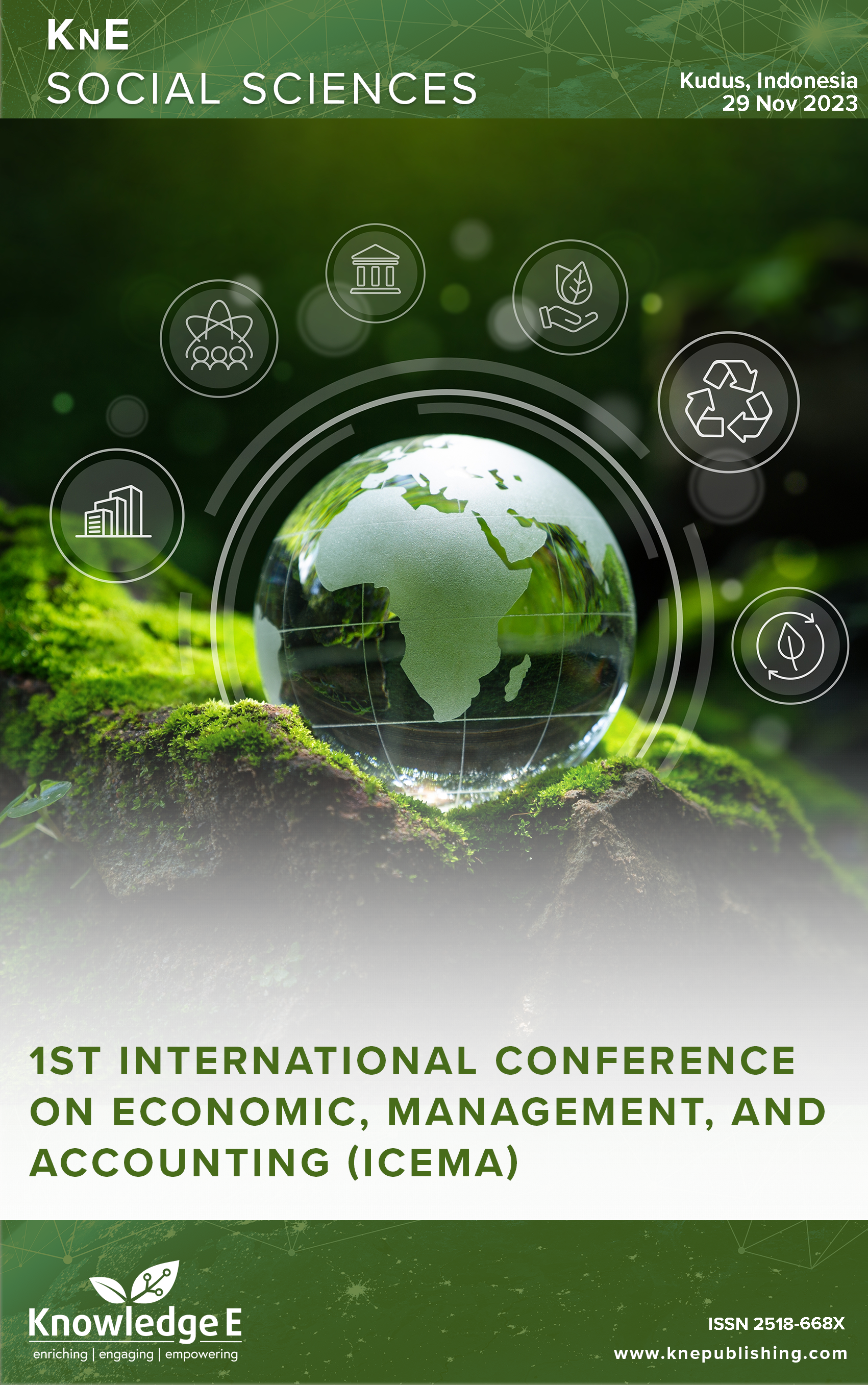Survival of ASEAN Firms: Understanding Profitability, Liquidity, and Solvency Dynamics During Financial Distress
DOI:
https://doi.org/10.18502/kss.v9i17.16372Abstract
In the dynamic landscape of business, a firm’s financial sustainability is paramount for long-term growth and operational stability. Key components of a firm’s financial structure include profitability, liquidity, and solvency. This study examines their impact on financial distress within the ASEAN region from 2012 to 2021, utilizing a sample of 44,800 observations. The findings reveal that profitability and liquidity exhibit a negative relationship with financial distress, suggesting that firms with higher profitability and liquidity are less susceptible to financial difficulties. Conversely, solvency demonstrates a positive association with financial distress, indicating that firms with greater solvency may face heightened risks of encountering financial distress. These findings hold significant implications for corporate decision-makers, financial analysts, and policymakers. Understanding the interplay among profitability, liquidity, and solvency enables firms to develop robust financial strategies to mitigate the likelihood of financial challenges. This research contributes valuable insights to the discourse on managing financial risks, offering guidance for prudent financial decision-making amidst evolving business landscapes.
Keywords: profitability, liquidity, solvency, financial distress
References
Whitaker R. Whitaker, Richard. The early stages of financial distress. J Econ Finance. 1999;23(2):123–32. [cited 2023 Mar 28] Available from: https://econpapers.repec.org/RePEc:spr:jecfin:v:23:y:1999:i:2:p:123-132 DOI: https://doi.org/10.1007/BF02745946
Budiyasa IG, Widnyana W. Assessing the Condition of Financial Distress W Ith Analysis of Liquidity, Solvency and Profit O F Companies in Indonesia. Am J Humanit Soc Sci Res [Internet]. 2022;(6):279–84. Available from: www.ajhssr.com
Emrinaldi ND. Analisis pengaruh praktek tata kelola perusahaan (corporate governance) terhadap kesulitan keuangan perusahaan (financial distress): suatu kajian empiris. Vol. 9, Jurnal Bisnis dan Akuntansi. 2007.
Platt HD, Platt MB. Understanding Differences Between Financial Distress and Bankruptcy. Rev Appl Econ [Internet]. 2006 [cited 2023 Mar 28];2(2):141–57. Available from: https://ageconsearch.umn.edu/record/50146
Nafsiah SN, Birahma RY. Faktor-Faktor Yang Mempengaruhi Penggunaan Informasi Akuntansi Pada UMKM (Survei Perusahaan Umkm Pdam Tirta Sejiran Setason Kab.Bangka Barat) Siti. MBIA. 2019;18(3):90–100. DOI: https://doi.org/10.33557/mbia.v18i3.546
Hanifah OE, Purwanto A. Pengaruh Struktur Corporate Governance Dan Financial Indicators Terhadap Kondisi Financial Distress. Diponegoro J Account. 2013;2(ISSN (Online): 2337-3806).
Kuncoro MT, Ashsifa I. How Does Economic Uncertainty Impact the Banking Sector Performance? Evidence from ASEAN. AKUNTABILITAS. 2023;17(2):275–92.
Galih M, Indah S. The Effect of Profitability and Leverage on Financial Distress with Inflation as Moderating. 2021;13(1):134–43. DOI: https://doi.org/10.17509/jaset.v13i1.31368
Setyaningsih T, Gunarsih T. THE EFFECT OF FINANCIAL RATIO AND CORPORATE GOVERNANCE MECHANISMS ON THE FINANCIAL DISTRESS IN. Indonesia. 2018;3(2):59–66.
Ashsifa I, Kuncoro MT, Salisa NR. ANALISIS RASIO KEUANGAN TERHADAP FINANCIAL DISTRESS DENGAN UKURAN PERUSAHAAN SEBAGAI VARIABEL MODERASI. TECHNOBIZ Int J Bus. 2023;6(1):21–8.
Diyanto V. The Effect of Liquidity. Leverage and Profitability on Financial Distress. 2018;2020:127–33. DOI: https://doi.org/10.31258/ijesh.2.2.127-133
Ariani DW. Manajemen Operasi Jasa. Manaj Operasi; 2014.
Martin K. Manajemen Keuangan Prinsip-Prinsip dan Aplikasi. Book2. 2005.
Syamsudin L. Manajemen Keuangan Perusahaan Edisi Terbaru. PT Raja Graf Persada; 2016.
Prihadi T. Laporan Keuangan Konsep dan Aplikasi. Analisis Laporan Keuangan Konsep dan aplikasi. 2019.
Kasmir. Analisis laporan keuangan∼Kasmir: Analisis laporan keuangan. Edisi. 2014;
Pasaribu RBF. Penggunaan Binary Logit Untuk Prediksi Financial Distress Perusahaan Yang Tercatat Di Bursa Efek Jakarta (Studi Kasus Emiten Industri Perdagangan). J Ekon Bisnis, Dan Akunt Ventur. 2008;11(2).
Connelly BL, Certo ST, Ireland RD, Reutzel CR. Signaling theory: A review and assessment. J Manage. 2011;37(1):39–67. DOI: https://doi.org/10.1177/0149206310388419
Indriastuti M, Kartika I, Najihah N. Financial Distress Prediction: The Ownership Structure and Management Agency Cost. Indones J Account Res. 2021;24(02):243– 58. DOI: https://doi.org/10.33312/ijar.514
Normiati, Amalia D. ANALYSIS OF THE EFFECT OF FINANCIAL RATIO ON FINANCIAL DISTRESS CONDITIONS IN MANUFACTURING COMPANIES LISTED. 2021;5(2). DOI: https://doi.org/10.30871/jama.v5i2.3548
Rizqiyah F. KINERJA KEUANGAN DALAM MEMPREDIKSI FINANCIAL. 2017;11(1):42–8. DOI: https://doi.org/10.32812/jibeka.v11i2.59
Sawir A. Analisis kinerja keuangan dan perencanaan keuangan perusahaan. Gramedia PustakaUtama; 2001.
Fatmawati V, Rihardjo IB. PENGARUH LIKUIDITAS, LEVERAGE, AKTIVITAS DAN PROFITABILITAS DALAM MEMPREDIKSI FINANCIAL DISTRESS. J Ilmu dan Ris Akunt [Internet]. 2017 [cited 2023 Mar 29];6(10). Available from: http://jurnalmahasiswa.stiesia.ac.id/index.php/jira/article/view/1714

